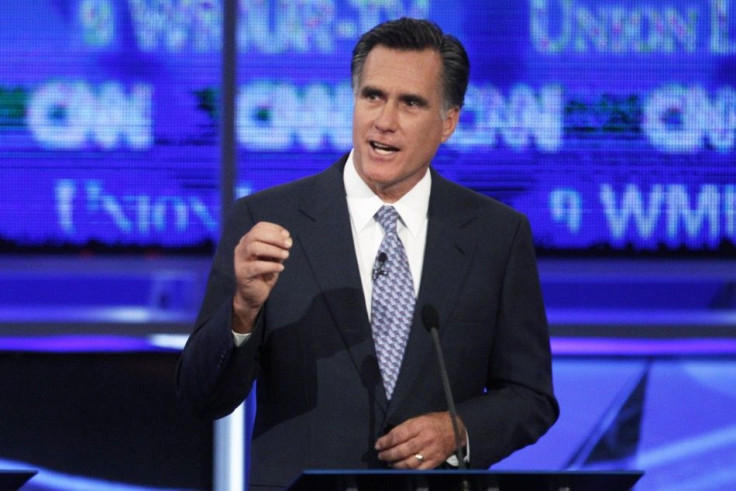Mitt Romney Jobs Plan: Repeal Regulations, Cut Taxes, Sanction China

Republican residential candidate Mitt Romney unveiled an economic revitalization plan on Tuesday that relies heavily on paring back tax rates, reducing regulation and overhauling trade policy.
The blueprint hews to mainstream Republican economic principles of limiting government and slashing taxes, establishing a sharp contrast with President Barack Obama as he prepares to announce a $300 billion jobs plan that entails infrastructure spending and increased aid to state and local governments.
The right answer for America is not to grow government or to believe that government can create jobs, Romney said upon releasing his plan. It is instead to create the conditions that allow the private sector and entrepreneurs to create jobs and to grow our economy. Growth is the answer, not government.
Romney Wants Even Lower Tax on Upper-Income Groups
Arguing that lowering taxes is the swiftest route to job creation, Romney laid out proposals to cut the top corporate income tax rate from 35 percent to 25 percent, make permanent the tax cuts enacted under George W. Bush and eliminate taxes on dividends, interest and capital gains for anyone making less than $200,000 a year.
The former Massachusetts governor also outlined trade policies that would be favorable to American businesses, including free trade agreements with Colombia, Panama and South Korea. He also promised to sanction China for keeping its currency artificially low, a move that he said would level a key trade imbalance.
I'll clamp down on the cheaters, and China's the worst example of that, Romney said. We can't have a trade war. But we can't have a trade surrender, either.
Romney promised to roll back regulations immediately if elected, describing a series of executive orders he would issue. Those would curtail Obama's healthcare overhaul, make it easier to obtain oil-drilling permits, and eliminate other regulations.
Also included in the plan were a series of measures to sharply curtail government spending, including a 10% cut in the federal workforce, a promise of no new regulations that add new costs to the economy and a plan to save money on Medicaid by converting the program to block grants.
© Copyright IBTimes 2024. All rights reserved.





















